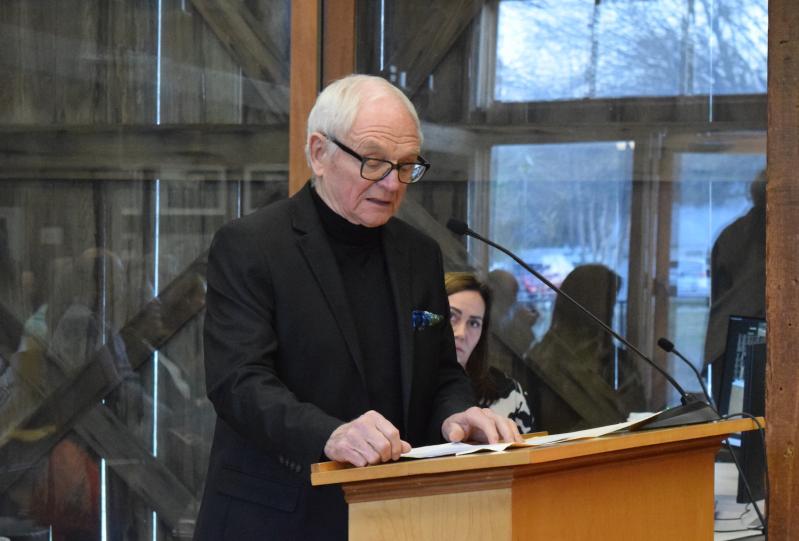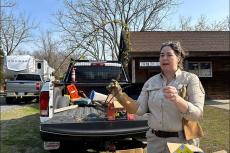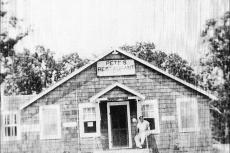Some residents of Montauk fear their hamlet will see an explosion in air traffic if aircraft operations are restricted at East Hampton Town Airport in Wainscott, while some residents of Wainscott say the town should simply close East Hampton Town Airport, which is destroying their quality of life.
The residents, and one from Southampton Town, were united in their desire to minimize air traffic in their neighborhoods, but divided as to how that should be achieved, at the East Hampton Town Board’s March 13 public hearing on a draft generic environmental impact statement on proposed operational changes at East Hampton Town Airport.
It was almost two years ago that the board, on the advice of outside counsel and consultants and in conjunction with the Federal Aviation Administration, briefly closed the airport and reopened it anew as a private facility. That followed the 2021 expiration of federal grant assurance obligations with respect to operations. The intention was to implement what is called a prior-permission-required framework and study the real-world impacts of it, including on nearby airports, and associated vehicular traffic, in the summer. That plan was brought to a standstill by lawsuits and a New York State Supreme Court judge’s imposition of a temporary restraining order.
While the Federal Aviation Administration reclassified the airport as a private-use facility in 2022, the town has continued to operate it as a public-use airport, consistent with pre-2022 policies and procedures.
Last month, the board voted to accept the draft impact statement prepared by consultants, and set the hearing for public review and comment. The draft statement considers the impacts of imposition of restrictions on flight activity at East Hampton Town Airport such as curfews, reduction or elimination of commercial operators, noise and sizebased restrictions, and airport directorbased permissions such as ultra-light vehicle operations, skydiving, banner towing, and touch-and-go operations. The town is also studying potential environmental impacts of closing the airport when legally permissible, and is considering restricting or eliminating leadbased fuel sales or the operation of aircraft that utilize them.
As implementing a prior-permissionrequired framework is a discretionary action with potential environmental effects, it is subject to the New York State Environmental Quality Review Act, or SEQRA, which requires a “hard look” at potential impacts prior to permanently committing to the proposed action. In addition to thorough environmental review, SEQRA requires public participation and an examination of alternatives.
Peter Feroe of the AKRF environmental, planning, and engineering consultancy told the board during a presentation of the draft generic environmental impact statement last month that a P.P.R. framework at East Hampton Town Airport would affect 24 percent of annual operations and 28 percent of summer operations there, or 1.6 and 3.8 operations per hour respectively. Along with diversions to the privately-owned Montauk Airport, which could see a sharp increase in summertime flight operations, Gabreski Airport in Westhampton Beach would see a 6-percent increase in annual operations and an 8-percent increase in summer operations, and the Southampton Heliport would see a 43 to 47-percent increase. A flight operation is defined as a takeoff or a landing.
At the public hearing, Barry Raebeck of Wainscott, director of the Coalition to Transform East Hampton Airport, made “yet another attempt to implore you to do the right thing” by closing the airport, which he called a “seasonal horror” and an “out-of-control pollution plant.” The airport primarily serves the “1 percent” who he said are predominantly nonresidents. The town should be mitigating climate change to protect future generations and not “pandering to polluters,” he said. “How,” he asked, “can a town which claims it is green so casually ignore the largest polluter in its midst?”
But Kelly Bloss of Montauk said that the draft impact statement confirms that imposition of a prior-permission-required framework or closure in East Hampton would simply transfer its environmental impacts “to another part of the same town.” The proposed changes will make a bad situation worse, she said, and foisting those impacts and new safety concerns onto Montauk is unacceptable.
“Please don’t kick this can across the town to our area,” echoed Barbara Grimes of Montauk.
Tom Bogdan, also of Montauk, agreed, speaking of the narrow East Lake Drive, which has no shoulder and dead-ends at the beach parking lot a short distance north of the airport. Along that country road are 173 residences, five motels, five marinas, more than 300 boat slips, multiple restaurants, a private club, “and the largest fish packing place in New York State,” he said. Montauk, he asserted, is far more affected by airport-related vehicle traffic than elsewhere in the town.
Hersey Egginton read a letter from the Wainscott Citizens Advisory Committee. The prior-permission framework is “an important, if imperfect, step” in the right direction, he said. It is unclear if it would adequately address “the noise and safety issues that have affected the community over the years.” He also said that it fails to sufficiently address the town’s stated goals with respect to climate change.
“If you close it,” John Kirrane of the Noyac Civic Council said of East Hampton Town Airport, “no one in my community would miss it.” He asked the board not to be swayed by arguments that the airport brings millions of dollars to the town annually. “This is one one-hundredth of 1 percent of the people who come out here who are burdening the other 99 percent who want to live here because it’s such a beautiful place,” he said, urging the board to “stay the course.”
The board is accepting written comments through April 2. It must respond to all substantive comments in a final environmental impact statement, and can then adopt a statement of findings summarizing environmental impacts and mitigation and setting a rationale for its decision on the prior-permission-required framework. That is expected in the summer, at which point the town could act on its proposal.




